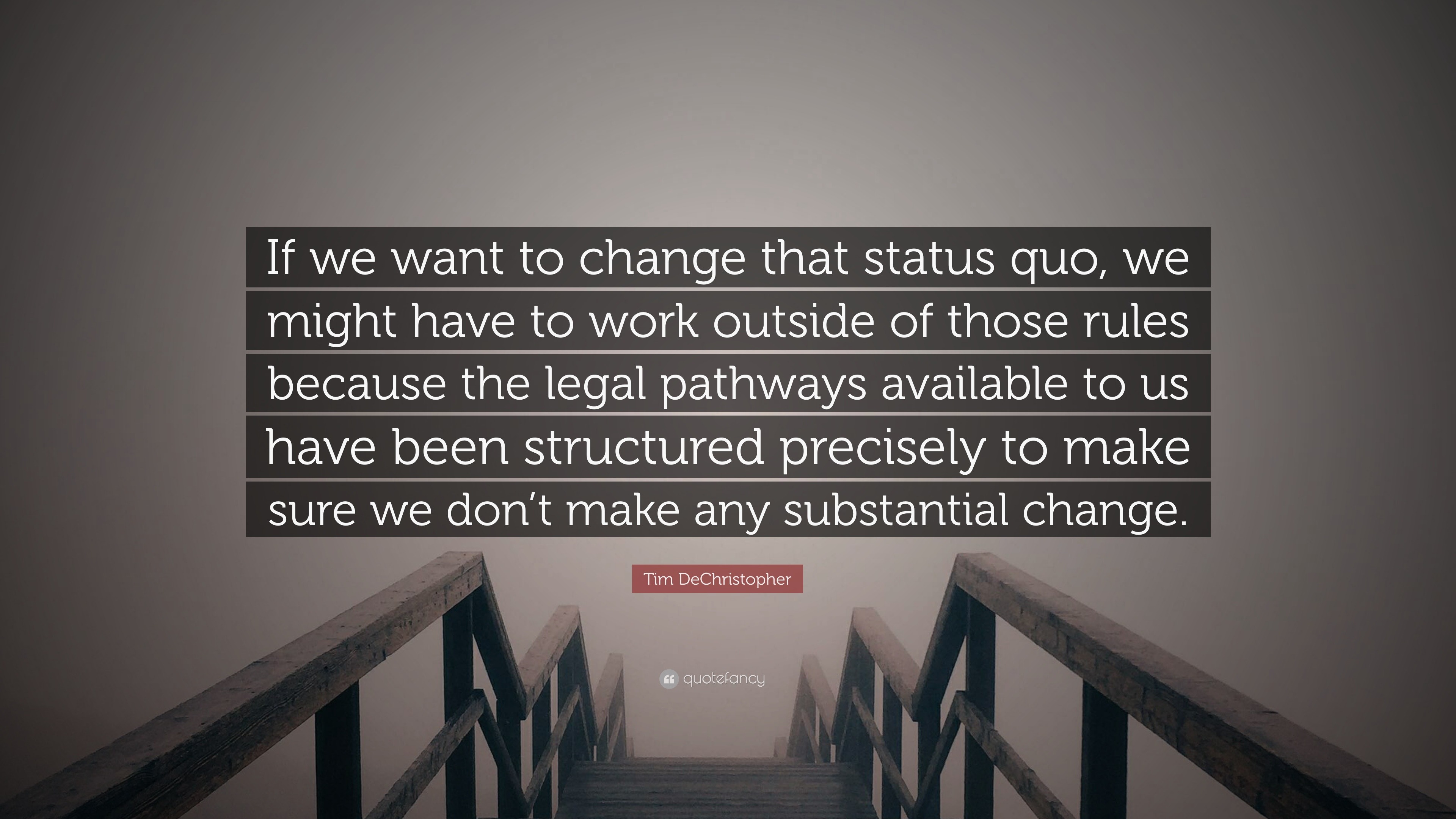Status Quo Meaning Explained: Its Function in Legal Analysis and Technique
Status Quo Meaning Explained: Its Function in Legal Analysis and Technique
Blog Article
Browsing the Characteristics of Standing Quo in Legal Equipments: An Alternative Strategy
In the world of legal systems, the concept of standing quo holds a considerable function in shaping the foundation upon which laws and regulations are developed. By diving into the complex interplay of different factors affecting the lawful condition quo, one can discover nuanced insights that pave the way for informed decision-making and critical preparation.
The Importance of Condition Quo Evaluation
In legal process, performing a thorough condition quo evaluation is paramount to comprehending the present state of events and offering a structure for notified decision-making. This evaluation entails a comprehensive testimonial of existing conditions, arrangements, and conditions that shape the context within which legal activities are being taken into consideration. By examining the condition quo, attorneys can identify essential stakeholders, responsibilities and civil liberties, prospective threats, and opportunities for resolution.
Furthermore, delving right into the status facilitates the recognition of any type of voids or disparities that may exist, dropping light on areas that require focus or explanation. This procedure help in setting practical assumptions and establishing approaches that straighten with the prevailing conditions. Comprehending the status is critical for establishing a roadmap that overviews lawful procedures towards effective outcomes while minimizing unplanned effects.
Eventually, a precise condition quo analysis functions as a keystone for audio lawful suggestions and tactical planning. It allows legal experts to navigate complexities, prepare for challenges, and customize their approach to achieve favorable results for their clients.
Elements Influencing Legal Status
Considering the complex internet of legislations, regulations, and social norms, what are the primary factors that shape and influence the lawful standing quo in contemporary legal systems? Several essential elements play crucial functions in figuring out the legal status quo within a legal system. Furthermore, political characteristics and the equilibrium of power within a legal system can heavily affect the legal condition quo.
Methods for Condition Quo Monitoring
Efficient management of the lawful status calls for a calculated approach that recognizes the dynamic nature of legal systems and the varied variables affecting them. One key method for status quo administration is regular tracking and analysis of lawful developments. This includes remaining updated on brand-new laws, policies, and judicial choices that could affect the existing legal landscape. By proactively checking these modifications, attorneys can prepare for potential difficulties and adjust their strategies as necessary.
In addition, efficient interaction and partnership amongst stakeholders are vital approaches for taking care of the condition quo in legal systems. By promoting open discussion and cooperation in between policymakers, lawyers, and various other relevant events, potential conflicts can be resolved proactively, and services can be established collaboratively to keep a stable lawful setting.
Challenges in Status Adaptation

In addition, the lack of clear standards for navigating status quo modifications can produce uncertainty and ambiguity. Lawyers commonly find themselves in undiscovered territory when trying to test existing norms or incorporate brand-new legal structures. This can bring about hesitancy and hesitation to differ acquainted techniques, better hindering the adjustment procedure.

Implementing Alternative Approaches
Including a detailed perspective right into lawful techniques is essential for attending to the complex difficulties of modern-day legal systems. Applying holistic techniques entails a change in the direction of checking out lawful issues as interconnected components of a bigger system instead of isolated cases. This requires a positive position that considers not only the instant lawful ramifications yet likewise the more comprehensive societal, financial, and moral influences of legal choices.
One trick aspect of carrying out all natural approaches is promoting interdisciplinary partnership within lawful groups. By uniting professionals with varied histories such as regulation, psychology, business economics, and sociology, an extra nuanced understanding of complex legal problems can be accomplished. This collective technique makes it possible for legal specialists to create more effective techniques that represent a wide variety of variables affecting the end results of lawful cases.
Additionally, embracing modern technology and data-driven understandings is crucial in carrying out alternative strategies in lawful systems. Leveraging tools like expert system for legal research, anticipating analytics for instance end results, and information visualization for providing complicated info can enhance decision-making processes and boost total lawful results. By integrating these technological advancements right into legal practice, an extra effective and holistic approach to attending to lawful obstacles can be accomplished.
Conclusion
Finally, browsing the dynamics of status in lawful systems calls for a detailed understanding of the importance of status analysis, the numerous aspects influencing legal status, reliable techniques for status monitoring, and the difficulties in standing quo adjustment. Executing all natural techniques is important for efficiently handling and adapting to the standing quo in legal systems. It is critical for lawyers to continuously evaluate and adjust to the altering characteristics of the status quo to make certain reliable and reliable legal results.
Taking into consideration check my reference the elaborate internet of legislations, laws, and social standards, what are the key elements that form and affect the legal condition quo YOURURL.com in modern legal systems? A number of vital factors play vital functions in figuring out the legal status quo within a legal system. It is the interaction of these variables that collectively form and affect the lawful status quo in contemporary lawful systems.
Reliable management of the lawful status quo needs a critical approach that acknowledges the dynamic nature of legal systems and the diverse factors influencing them.In final thought, browsing the characteristics of standing quo in lawful systems requires a thorough understanding of the importance of condition quo analysis, the different aspects affecting lawful condition quo, efficient techniques for standing quo administration, and the obstacles in condition quo adaptation.
Report this page